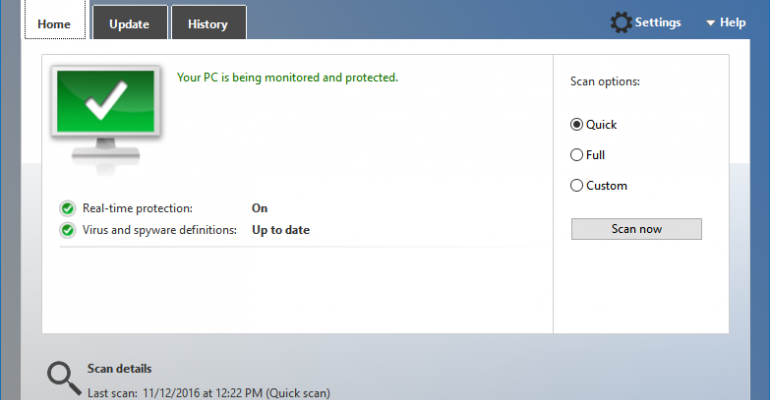In the course of the last week a handful of security software vendors have come out to criticize the integration of Microsoft's Windows Defender in the Windows 10 operating system.
My first observation about these critics is that Windows Defender was also integrated with Windows 8.1 when it was released in August 2013 - I wonder why this was not an issue back then? Maybe it is because Windows 8.1 was simply not that popular of an operating system after Windows 7. It is also probably related to the fact that Windows 10 now has over 400 million active users according to Microsoft and is already outpacing the adoption rate that Windows 7 experienced in the same period of time after its release.
In other words, Windows 10 is a popular OS and it is staying around for a while so it is an easy target for these types of complaints.
However, what is being missed in much of the discussions about the concerns being raised by these third party security software vendors is exactly how Windows Defender behaves when a user opts to use another security software suite.
First - if a user decides to install one of these other security software options on Windows 10 then Windows Defender will be turned off at that time in order to prevent any conflicts with the users choice of software. Plus running multiple copies of security software can impact your system resources and slow down your computer so it makes sense to have Windows Defender go offline when the new software is ready to use.
In fact, many Windows 10 based devices purchased from OEMs contain a trial version of security software that is turned on and setup by default when the user prepares their new machine for its first use. In these situations, Windows Defender will also be turned off to avoid any conflicts.
Another thing to note - Windows Defender can not be enabled manually if you are already using a third party security software to protect your system.
Second - when that users installed security software expires or the signatures become out of date because the subscription was not renewed/canceled, then Windows Defender will pop up a reminder that the users current choice of security software is in that state and recommend the user get it updated or activate Windows Defender. If the user decides to not update their current security software or to activate Windows Defender then about 30 days later Windows Defender will be turned back on in order to provide protection to that device for its users.
In my opinion, this is very good citizenship behavior in that it allows the users choice to take precedence and Windows Defender only takes over after the user has had an opportunity to address an expired product/service.
In past versions of Windows before Defender was integrated with the operating system, these out of date systems would languish and eventually become very vulnerable to all of the threats our security software is supposed to prevent.
The process Microsoft has now established for Defender allows users choice for their security and protection but keeps an ace in the operating systems back pocket just in case so that Windows has some level of protection.
So based on all of the above, I have a hard time understanding how some of these third party security software vendors believe that this process prevents users from choosing their software over Windows Defender.
What are your thoughts on this sitatuon?
But, wait...there's probably more so be sure to follow me on Twitter and Google+.





